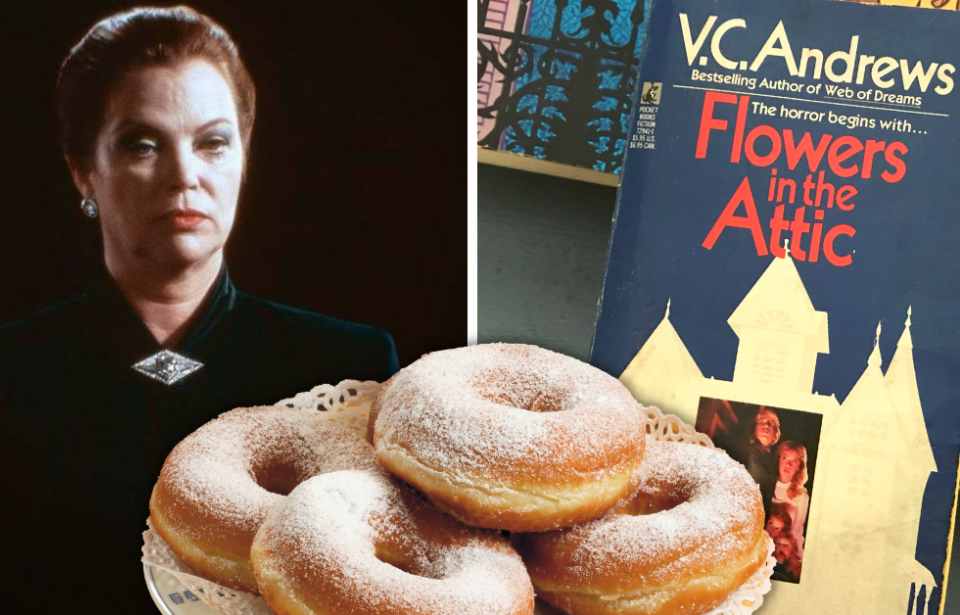Many girls growing up in the early ’80s discovered a dark, Gothic novel called Flowers in the Attic, written by Cleo Virginia Andrews under the pen name of V.C. Andrews.
Given its darker themes, it was originally marked as an adult book. However, Andrews’s editor, Ann Patty, has a theory on why it speaks to young adults so much: “I realized that it’s a metaphor for exactly the state teenagers are in. They’re imprisoned by their parents, but they want freedom. So the book plays right into that duality.”
Lots of people remember this story from their teenage years, but there are some surprising facts about the books and the author that you might not know.
The book itself
Flowers in the Attic is the first in the Dollanganger series (being the surname of the main protagonists) and is set in 1957. When Corinne Dollanganger’s husband dies, she tells her children (Chris, Cathy, and twins Carrie and Cory) that they must move to Foxworth Hall, Virginia. That’s the home of their maternal grandfather. Corinne’s multimillionaire father disapproved of her marriage but now that he’s on his deathbed, she hopes to be reinstated in his will and get a share of his fortune. One snag: he doesn’t know the children exist, so they must hide in the attic until she can break the news to him.
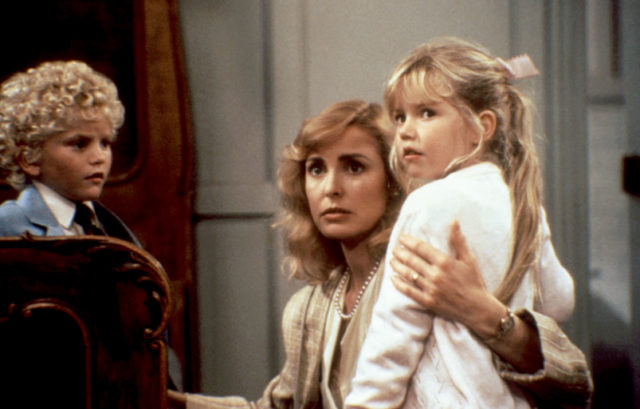
An arrangement that was only supposed to last a few days ends up lasting years, during which time some truly dreadful secrets emerge and some terrible acts take place.
Andrews was in pain and used a wheelchair most of her life
How Andrews came to be in so much pain is disputed. Some sources say she fell down a staircase at school when she was a teenager; others claim she suffered crippling arthritis. Some sources mix the two together and suggest the surgery gave her arthritis.
Whatever the cause, her editor, Ann Patty, described how after the surgery “Her spine was fused… From her butt bone to her head, the spine did not move.” Despite this, Andrews became a painter and then a bestselling writer.
Her first attempt at a novel was 290,000 words long
Being in a wheelchair or on crutches didn’t stop Andrews from completing an art correspondence course that enabled her to support herself and her mother as a commercial artist and portrait painter after her father died in 1957.
However, she felt she had greater potential as a writer and so started scribbling away. When one of her manuscripts was rejected by an agent, the accompanying letter stated that the manuscript was far too long and she should try a briefer work. Encouraged by this, Andrews wrote Flowers in the Attic, which was only 98 pages long.
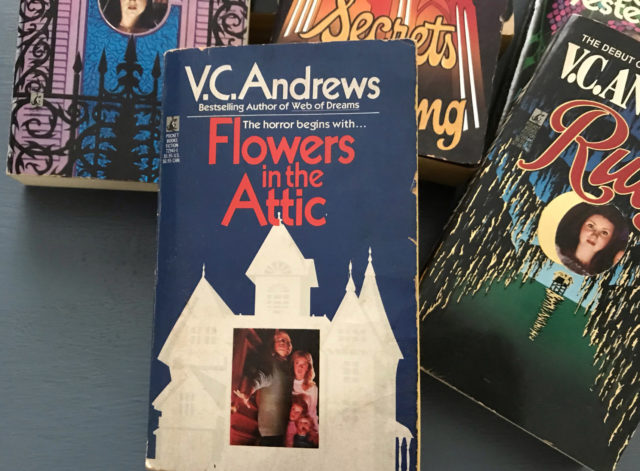
Flowers in the Attic was based on a true story Andrews heard
On The Complete VC Andrews website, one of the author’s relatives reveals: “Virginia was a young lady when my dad made arrangements to take her to the University of Virginia hospital for treatment. While she was there, she developed [an attraction to] her young doctor. He and his siblings had been locked away in the attic for over six years to preserve the family wealth.”
Andrews’s editor had thoughts as to what was real and what was fiction in the novel: “I’d guess that some aspects of it were true – at least the aspect of kids being hidden away. Whether the twins were real, the sex, the time frame, probably not. I think it was just the concept of kids hidden in the attic so the mother could inherit a fortune.”
The book is also based on her own suffering
With an inflexible spine that prevented her from living an active life, Andrews found herself somewhat removed from the world. As her editor explained: “She never really had much of a life, so she was stuck in perceptions of the way the world works of a young teenager, because after the age of fifteen, she wasn’t in the world anymore.”
Meeting Andrews was a defining moment for Patty in understanding how the author wrote teenage voices so well: “And then it all became clear: she was that teenager. If you think about her emotional life and her experiences and independence – which there was none – her life kind of stopped when she was about 14 or 15.”
Her groundbreaking novel was written in two weeks – while standing up
Many authors will tell you how much they rewrote and polished their work before sending it out into the world, but not Andrews. In a 1983 interview with Twilight Zone magazine, Andrews revealed that she “wrote [the book] in two weeks. By that time, however, I had been writing for seven years and had written nine unpublished novels.” However, given that she’s also claimed it took her only one night to write (or possibly that the revisions her publisher required to “spice up” the story only took that long), it’s hard to know how much truth there is to that statement.
Andrews’s writing speed probably had a lot to do with how close she felt to her characters. She could empathize with the way they had been kept from the wider world, just as her own health problems kept her from doing everything she wanted to do. In a 1985 interview, Andrews explained, “When I wrote Flowers in the Attic, all of Cathy’s feelings about being in prison were my feelings. So that, when I read them now, I cry.”
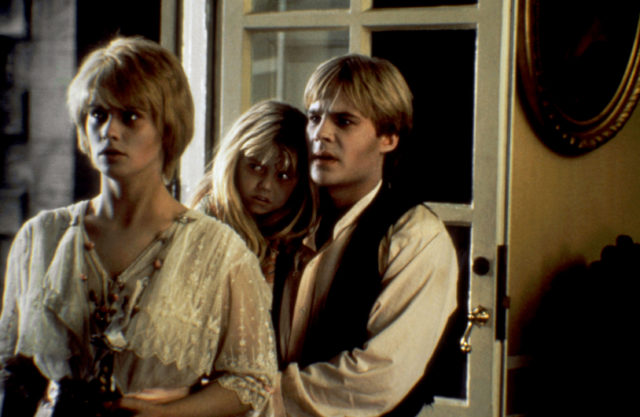
Joan Andrews, Virginia’s sister-in-law, talked about how she would write early novels “standing up at a chest-high desk using a typewriter. She would be at that desk sometimes 10 to 12 hours writing. She once showed me the soles of her shoes where they were worn through, and the bones were protruding on the bottom of her feet.”
Andrews revealed that she’d already handwritten Petals on the Wind, the sequel to Flowers in the Attic, while she was pitching the first book, but she didn’t want to commit to typing it up until she’d sold Flowers first.
The success of her books gave Andrews greater freedom than she’d ever known
Joan has also commented on how the success of Andrews’s books gave her greater freedom than she’d ever known. The author “bought a beautiful estate home on the Chesapeake Bay in Virginia Beach,” and she also purchased an IBM computer so that she could be more productive in her writing.
According to an article in the Washington Post, Andrews’s Virginia residence was “an imposing, 11-room contemporary white brick ranch, complete with attic,” where Andrews lived with her mother.
But a gamechanger for Andrews was being able to buy a van into which her wheelchair would fit. “She became very mobile and loved getting out and about,” her sister-in-law said.
When Andrews’s books began to do well in the UK as well as the USA, she was invited by her British publisher to come over and meet him, and they had a big party at Claridge’s Hotel in London.
Wes Craven wrote a screenplay for Flowers in the Attic
There have been two film adaptations made of Flowers in the Attic, one in 1987 and another in 2014.
According to Screenrant, after a movie version was given the go-ahead, Wes Craven wrote a screenplay that he was planning to direct. However, as one can imagine, Craven’s version would not have been given a PG-13 rating the studio wanted, so Jeffrey Bloom was picked to replace Craven.
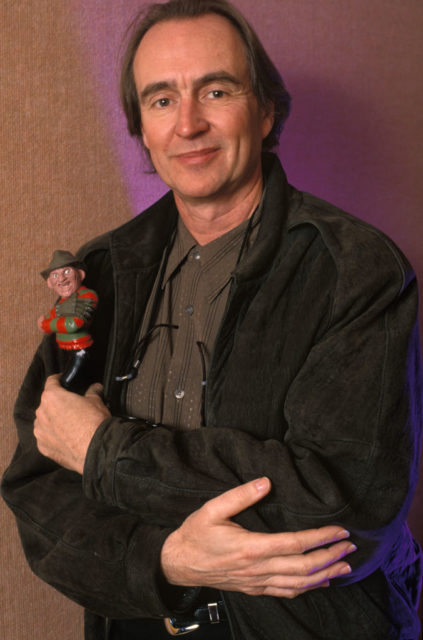
However, the producers kept the original ending that Craven had written, preferring it to the ending of the book.
Andrews herself had a cameo in the 1987 version as a maid washing the windows.
Andrews once served her editor sugared doughnuts
Anyone who’s read Flowers in the Attic will understand the significance of this. There must have been raised eyebrows when, on the first time meeting her editor in person, Andrews served up this sugary treat.
Luckily, Patty appreciated the author’s dark sense of humor.

She claimed to be psychic
In an interview with the Washington Post, Andrews revealed: “As a child, I really felt in my bones that I was not going to lead an ordinary life. I had psychic moments which showed me I was going to have trouble, and that eventually I was going to end up using crutches. I was very angry at the time. ‘This can’t be, this can’t be,’ I said. I used to watch movie actresses, how they walked and sat and backed up to a chair. I practiced it. Nobody was going to tell me I was going to end up on crutches. Yet I had visions where I would just see it. I also saw myself at an easel. I remembered seeing it as a kid. These visions occurred often, like fate preparing me so that I’d be able to cope, a sort of kindness to get me ready.”
Another true story inspired Heaven
While the inspiration for Flowers in the Attic remains a little vague, the provenance of the Casteel series is more set in stone. Andrews actually secured a manuscript written by a woman whose father had sold her.
Patty herself has gone on record as saying: “Heaven was indeed based on a true story. The person in question submitted her manuscript to Humphrey Evans (the agent who discovered V.C. Andrews). It was unpublishable, but when Humphrey told me about the story, we realized, though the writer couldn’t write well enough, Virginia could. The story was bought for Virginia, and the woman visited Virginia and they made tapes, from which Virginia wrote the novel, based on the woman’s story. The tapes still exist. It is true only Heaven was based on it, but this woman really was sold by her father.”
She was so fixated on her work, she ignored the cancer that would kill her
While Andrews threw herself into writing the second book of the Casteel series, she found a lump in her breast.
Patty describes how Andrews “would not take care of the situation until she finished the current novel she was working on and also the sequel. By then, the cancer had begun to spread.”
She left several unpublished books at her time of death
Andrews only actually published seven novels before she passed away on December 19, 1986. However, the author had been working right up to her death and had more novels in a partly written or plotted state. Since the publishers were unaware of her cancer, just a couple of months before her death they’d offered her a $3 million contract for a third Casteel novel and a prequel to Flowers in the Attic which focused on the grandmother.
According to the Washington Post, a memo to Simon & Schuster’s staff read: “V.C. was writing right up until the time of her death and there are a number of novels remaining to be published, including the prequel to Flowers in the Attic, which Pocket Books will release in the last fall of 1987.”
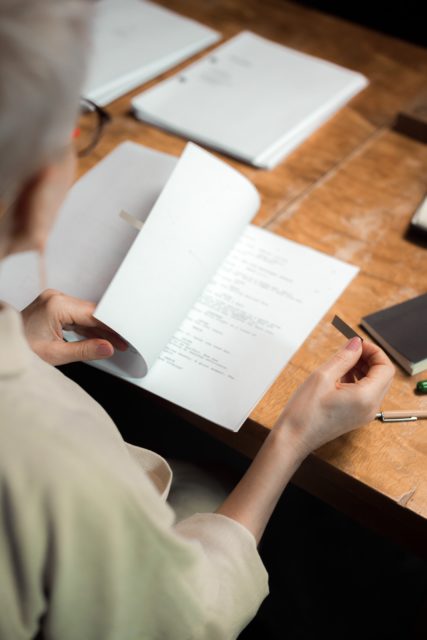
A ghostwriter was hired after her death, and no one noticed
Although there were still a few books left to be published, Andrews’s books were so phenomenally successful that the publisher was reluctant to give up on the name. So, they hired ghostwriter Andrew Neiderman to continue writing two to three books a year.
Niederman’s biggest success under his own name was The Devil’s Advocate, a book that was released in 1990 and was adapted into a movie starring Keanu Reeves and Al Pacino. His editor was also Ann Patty, but he shared an agent with Andrews: Anita Diamant. It was allegedly his agent who pushed for him to take over Andrews’s work.
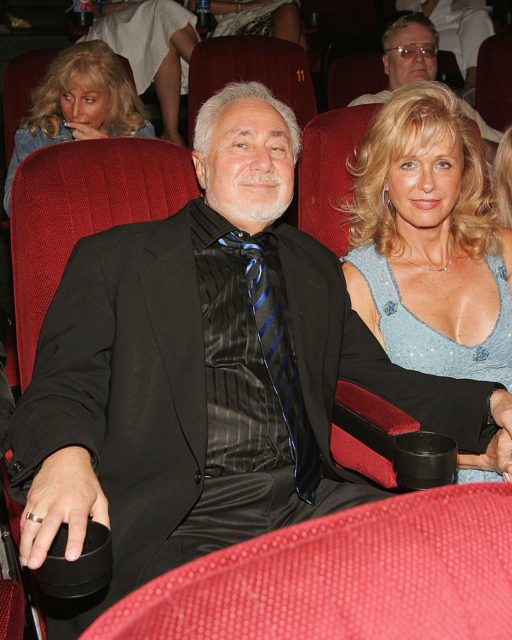
The publishers didn’t keep Andrews’s death a secret, but they didn’t shout it from the rooftops either. Instead, the copyright page included the following statement: “Following the death of Virginia Andrews, the Andrews family worked with a carefully selected writer to organize and complete Virginia Andrews’s stories and to create additional novels, of which this is one, inspired by her storytelling genius.”
To keep his work separate from Andrews’s own, Niederman has said: “I wrote on two different computers. I would turn my chair around and suddenly go into V.C. Andrews.”
